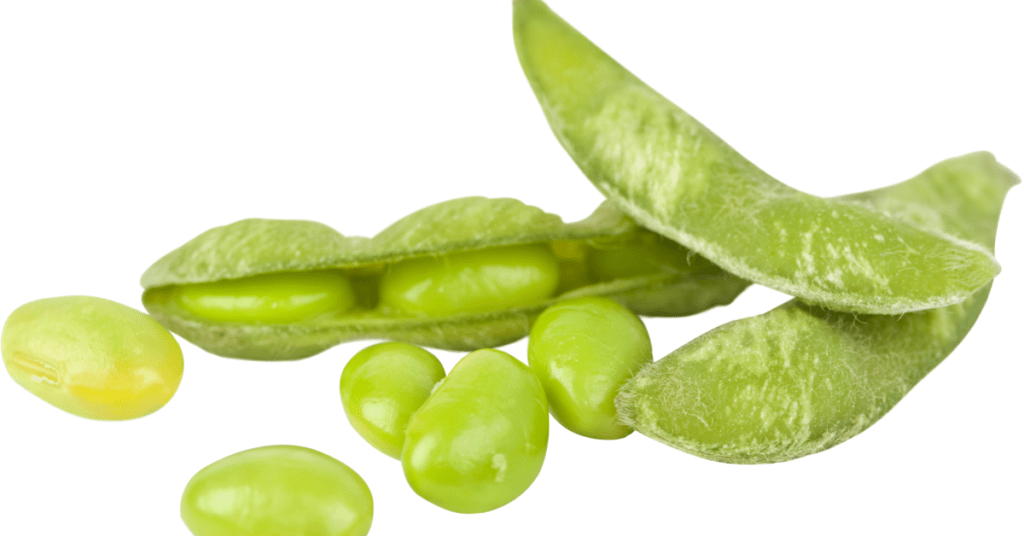Nutritional Value of Legumes
Legumes, encompassing beans, lentils, chickpeas, and peas, are nutritional powerhouses that have been a staple in diets across cultures for centuries. These humble seeds are not only affordable and versatile but also packed with essential nutrients vital for overall health.
Macronutrients: One of the most notable nutritional aspects of legumes is their high protein content, making them an excellent plant-based protein source for vegetarians and vegans. They are also rich in complex carbohydrates and dietary fiber, which promote digestive health and help regulate blood sugar levels. Additionally, legumes provide beneficial fats, including essential fatty acids like omega-3 and omega-6.
Micronutrients: Legumes are a rich source of vitamins, particularly B vitamins like folate, which is crucial for cell function and DNA synthesis. They also contain an array of minerals such as iron, magnesium, potassium, and zinc. Furthermore, legumes are packed with antioxidants and phytonutrients, which help combat oxidative stress and reduce the risk of chronic diseases.
Health Benefits: Regular consumption of legumes has been associated with numerous health benefits, including improved cardiovascular health, better blood sugar regulation, and support for weight management. Their nutrient-dense profile makes them an indispensable part of a balanced diet, contributing to overall well-being and longevity.
Bioactive Properties of Legumes
Beyond their impressive nutritional profile, legumes are also rich in bioactive compounds, which are non-nutritive substances that exert beneficial effects on human health. These bioactive compounds, including phytochemicals like isoflavones, saponins, and phytosterols, contribute to the unique health-promoting properties of legumes.
Phytochemicals: Legumes are a rich source of various phytochemicals, each with its own set of health benefits. Isoflavones, predominantly found in soybeans, have been linked to reduced risk of hormone-related cancers, such as breast and prostate cancer. Saponins, which give legumes their foamy properties when cooked, have anti-inflammatory and immune-boosting effects. Phytosterols, plant-based compounds structurally similar to cholesterol, help lower LDL (bad) cholesterol levels, thereby reducing the risk of heart disease.
Gut Health: The dietary fiber present in legumes serves as a prebiotic, promoting the growth and activity of beneficial gut bacteria. This fiber-rich environment enhances gut health, aids in digestion, and may reduce the risk of gastrointestinal disorders. Furthermore, legumes contain resistant starches, which resist digestion in the small intestine and serve as fuel for beneficial gut bacteria in the colon, supporting overall gut microbiota balance.
Disease Prevention: The bioactive compounds in legumes play a pivotal role in disease prevention. Research suggests that regular consumption of legumes may have anti-diabetic properties, helping to stabilize blood sugar levels and improve insulin sensitivity. Additionally, the antioxidant properties of legumes combat oxidative stress, a key factor in aging and the development of chronic diseases like cancer and cardiovascular diseases.
Incorporating legumes into your diet can be a proactive step towards optimizing your health and well-being. Their bioactive compounds work synergistically with their nutritional components to provide a holistic approach to health maintenance and disease prevention. Whether you enjoy them in soups, salads, or as a meat substitute in your favorite dishes, legumes offer a versatile and delicious way to nourish your body and support a healthy lifestyle.
As research continues to uncover the myriad health benefits of legumes, it becomes increasingly clear that these humble seeds deserve a prominent place in a balanced and health-conscious diet. From promoting digestive health and supporting immune function to reducing the risk of chronic diseases, legumes offer a wealth of bioactive properties that contribute to their status as nutritional powerhouses.

Innovative Culinary Creations with Legumes
The culinary versatility of legumes extends far beyond traditional dishes, offering a plethora of innovative and delicious options that cater to diverse tastes and dietary preferences. As the demand for plant-based foods continues to rise, legumes have emerged as star ingredients in a variety of creative culinary creations, from plant-based proteins to indulgent snacks and international delicacies.
Plant-Based Proteins: Legumes are increasingly being used as the primary ingredient in meat and dairy alternatives, catering to the growing demand for plant-based protein sources. Burgers made from black beans or chickpeas, sausages crafted from lentils, and nuggets created from soybeans are just a few examples of how legumes can be transformed into savory and satisfying meat substitutes. Additionally, legumes are used to produce dairy alternatives such as milk, yogurt, and cheese, providing nutritious options for those with lactose intolerance or following a vegan lifestyle.
Snacks and Desserts: Legumes are also making waves in the snack and dessert categories, offering healthier alternatives to traditional options. Roasted chickpeas seasoned with spices, bean-based brownies rich in chocolatey goodness, and lentil cookies infused with natural sweeteners are gaining popularity among health-conscious consumers. Nutritional bars and energy balls made with legume flours or purees provide convenient and nutrient-dense snacks for on-the-go lifestyles.
International Dishes: Legumes are integral ingredients in a myriad of international dishes, adding flavor, texture, and nutritional value to global cuisines. Hummus, a creamy dip made from chickpeas, tahini, and spices, is a staple in Middle Eastern cuisine and has gained widespread popularity worldwide. Dal, a comforting lentil stew seasoned with aromatic spices, is a cherished dish in Indian cuisine. Falafel, crispy chickpea fritters, and bean-based dishes like Brazilian feijoada and Mexican refried beans showcase the versatility of legumes in creating flavorful and satisfying meals from around the world.
The culinary possibilities with legumes are endless, offering endless opportunities for creativity and exploration in the kitchen. Whether you are a seasoned chef or a novice cook, incorporating legumes into your culinary repertoire can elevate your dishes to new heights of flavor, nutrition, and sustainability. As consumers become more adventurous and health-conscious, the demand for innovative legume-based products and recipes is expected to continue growing, making legumes a staple ingredient in modern cuisine.
In conclusion, legumes are not only nutritional powerhouses but also versatile and adaptable ingredients that can be incorporated into a wide range of innovative culinary creations. From plant-based proteins and wholesome snacks to international dishes that showcase the diversity of global cuisines, legumes offer something for everyone. Embracing the culinary potential of legumes can lead to a more sustainable and health-conscious approach to cooking and eating, enriching both your palate and your well-being.
Eco-Friendly Evaluation Methods for Legumes
In an era of increasing environmental awareness and sustainability concerns, the evaluation of agricultural practices and food production methods has become paramount. Legumes, with their numerous nutritional and culinary benefits, also offer a sustainable alternative in food production. However, assessing the environmental impact of legume cultivation and processing requires innovative and eco-friendly evaluation methods to ensure their sustainability.
Sustainable Farming Practices: Adopting sustainable farming practices is essential for reducing the environmental footprint of legume production. Organic farming, which avoids the use of synthetic pesticides and fertilizers, promotes soil health, biodiversity, and water conservation. Agroforestry, integrating trees and shrubs with crops, enhances soil fertility, provides habitat for wildlife, and sequesters carbon dioxide, mitigating climate change impacts. Additionally, crop rotation and intercropping with other crops can help control pests and diseases naturally, reduce soil erosion, and improve nutrient cycling, contributing to more resilient and sustainable agricultural systems.
Life Cycle Assessment (LCA): Life Cycle Assessment is a comprehensive method used to evaluate the environmental impacts associated with all stages of a product’s life cycle, from raw material extraction and production to distribution, consumption, and disposal. Conducting LCAs for legume cultivation and processing can provide valuable insights into the environmental hotspots and identify areas for improvement. Assessing factors such as greenhouse gas emissions, water usage, energy consumption, and land use can help quantify the sustainability of different legume production systems and guide the development of eco-friendly practices.
Certifications and Labels: Certifications and labels, such as Fair Trade, organic, and non-GMO, play a crucial role in promoting transparency and consumer awareness in the food industry. These certifications ensure that legumes are produced using environmentally friendly practices, fair labor conditions, and non-genetically modified seeds. By choosing certified legume products, consumers can support sustainable farming practices and contribute to a more equitable and environmentally responsible food system.
Implementing eco-friendly evaluation methods for legumes is not only essential for promoting sustainable agriculture but also for ensuring the long-term viability of our food supply and protecting our planet’s resources. As consumers increasingly prioritize sustainability and ethical considerations in their purchasing decisions, the demand for eco-friendly and certified legume products is expected to grow. By embracing sustainable farming practices, conducting comprehensive Life Cycle Assessments, and supporting certified products, we can collectively contribute to a more sustainable and resilient food system for future generations.
In conclusion, the application of eco-friendly evaluation methods for legumes is crucial for assessing and improving their sustainability across the entire supply chain. By adopting sustainable farming practices, conducting comprehensive Life Cycle Assessments, and supporting certified products, we can ensure that legumes continue to provide nutritional, culinary, and environmental benefits for years to come. Embracing these eco-friendly practices is not only beneficial for the environment but also for promoting a healthier and more sustainable future for all.
Conclusion
Legumes, often regarded as humble seeds, have proven to be nutritional powerhouses with a multitude of health benefits and culinary possibilities. From their rich macronutrient and micronutrient profiles to their bioactive properties and innovative culinary applications, legumes offer a comprehensive approach to health and well-being. Their versatility in the kitchen allows for the creation of a wide range of dishes, catering to various dietary preferences and culinary traditions around the world.
Moreover, the eco-friendly evaluation methods discussed highlight the importance of sustainable practices in legume cultivation and food production. Adopting sustainable farming practices, conducting comprehensive Life Cycle Assessments, and supporting certified products are crucial steps towards promoting environmental stewardship and ensuring the long-term viability of legume production. As consumers become more informed and conscious of their food choices, the demand for sustainably produced and certified legume products is expected to rise, driving positive change across the food industry.
Incorporating legumes into your diet can be a proactive step towards improving your health, supporting sustainable agriculture, and contributing to a more environmentally responsible food system. Whether you enjoy them in traditional dishes or innovative culinary creations, legumes offer a delicious and nutritious way to nourish your body while respecting our planet’s resources.
As we continue to explore the potential of legumes, it is clear that these versatile seeds hold the key to a more sustainable, healthy, and flavorful future. By embracing the nutritional, culinary, and environmental benefits of legumes, we can create a positive impact on our health, our communities, and our planet. So, let’s celebrate the power of legumes and make them a staple in our diets, contributing to a more sustainable and vibrant world for generations to come.
Related Content
- Potential of Legumes:
- Potential of Legumes: Nutritional Value, Bioactive Properties
- The potential health benefits of legumes as a good source of dietary fibre
Explore Micro2media.com
- Think Green, Thrift Chic: Sustainable Style on a Budget
- Eat Your Way to a Stronger Spine: Top Foods for Back Health
- Nano-Scale Revolution: How Lab-on-a-Chip Technology is Transforming Environmental Monitoring and Toxicity Testing

